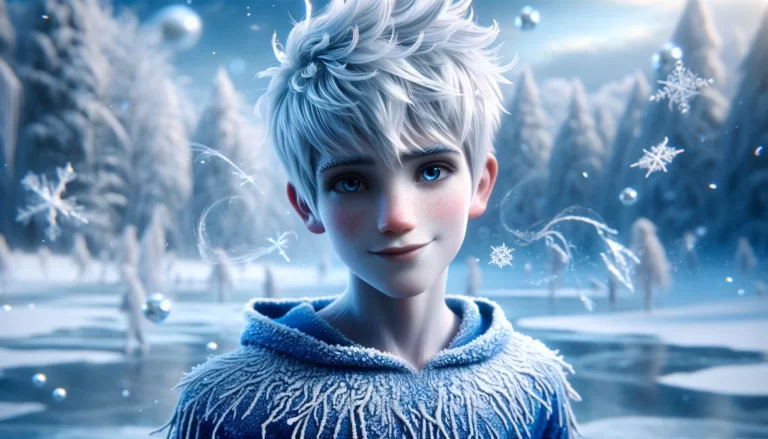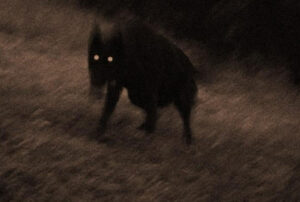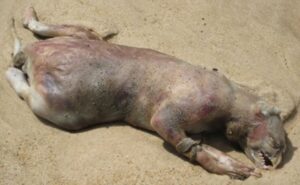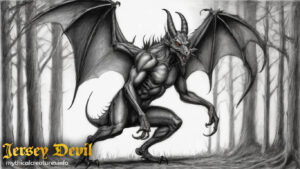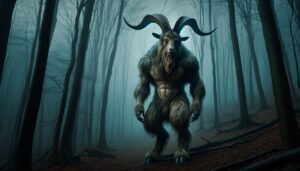Table of Contents
In the frosty realm of folklore and mythology, few characters captivate the imagination quite like Jack Frost. His name conjures images of winter’s chill and the intricate patterns he weaves upon windowpanes, transforming the world into a glistening wonderland. But who is Jack Frost? What are the secrets behind his icy touch, and what tales have been spun about him throughout the ages?
Origins
Jack Frost, the mischievous spirit of winter, boasts an intricate tapestry of origins steeped in myths and folklore, meticulously woven together over centuries. Although most notably affiliated with English and Russian traditions, echoes of similar frosty characters resonate through the tapestries of Scandinavian, German, and Celtic cultures.
English folklore portrays Jack Frost as a sprite or fairy embodying the cold and frosty aspects of winter. Depicting him as a playful and occasionally mischievous character, it delights in crafting intricate frost patterns on windows, freezing ponds and lakes, and nipping at the noses and toes of those who dare to venture out into the cold.
Jack Frost’s origins in English folklore can be traced back to the 17th century, with early mentions in literature and nursery rhymes. One of the earliest references comes from a 1624 poem by John Fletcher, which mentions “Jack Frost’s nipping.” Over time, he became a familiar figure in English winter lore, appearing in countless poems, songs, and stories.
Family Ties

Similar to many mythical characters, various traditions have assigned Jack Frost a family. In English folklore, he frequently shares associations with other winter sprites and creatures like the Snow Queen, the North Wind, and the Ice Maiden. These characters collectively create the magical wintry world that Jack Frost governs.
In addition, in Russian folklore, Father Frost is sometimes reported to possess a daughter known as Snegurochka, or the Snow Maiden. Snegurochka, a delicate and beautiful maiden, actively aids her father in performing his winter responsibilities. Furthermore, she frequently symbolizes the onset of the season’s first frost and snowfall and remains a cherished figure in Russian winter celebrations.
Appearance
Describing Jack Frost’s appearance, he typically possesses icy or frosty features, including frosty white hair, icy blue eyes, or even skin with a frosty sheen. Many depictions show him dressed in winter attire, such as a robe made of ice or frost, a crown of icicles, and sometimes fur-trimmed clothing. Furthermore, he often appears as a youthful or ageless character, maintaining a youthful face and displaying a mischievous or playful expression. Some interpretations even present him as an elemental or ethereal being, almost transparent or composed of ice and snow. On occasion, artists depict him with snowflakes surrounding him, highlighting his connection to winter and cold weather. In literature and art, Jack Frost is sometimes portrayed as an artist, endowed with the ability to create frost patterns on windows and surfaces.
Abilities
Jack Frost is a fictional character often associated with winter and cold weather in various mythologies and popular culture. The abilities and characteristics of him can vary depending on the specific portrayal or source material. Here are some common abilities and traits:
Ice Manipulation: Jack Frost is often depicted as having the power to manipulate ice and cold temperatures. He can create ice and frost, freeze objects, and create wintry landscapes.
Frostbite: In some depictions, Jack Frost can inflict frostbite or extreme cold on people or objects, causing them to freeze or become numb.
Winter Weather Control: Jack Frost may have the ability to control winter weather conditions, such as snowfall, blizzards, and ice storms.
In some stories, people might say they “feel” Jack Frost’s presence but can’t see him because he portrays Jack Frost as an invisible spirit who can move about unnoticed.
Many portray Jack Frost as an immortal or ageless being who has a connection to the changing of the seasons, especially the arrival of winter.
Some depictions of Jack Frost show him as a mischievous and playful character who enjoys playing pranks on humans, especially children.
Some interpretations depict Jack Frost as a guardian or protector of the winter season, ensuring that it keeps its cold and snowy characteristics.
Symbols and Representations

Jack Frost typically links to cold temperatures and icy conditions. Many perceive him as the personification of winter’s chill and the creator of frost on surfaces during cold weather.
Jack Frost often possesses the ability to create ice and snow, symbolizing winter. He may also take credit for frost patterns on windows and the formation of icicles.
People sometimes associate intricate frost patterns that appear on windows and other surfaces during cold weather with Jack Frost, viewing these patterns as his handiwork.
Jack Frost personifies the harsh and cold aspects of winter, representing the biting cold, frozen landscapes, and the beauty of snow-covered scenery.
Some stories recognize Jack Frost for his mischievous nature and his fondness for playing pranks, especially on humans and animals. This playful aspect defines him.
Many people often consider icicles, the long, pointed, and translucent ice formations that form when water freezes and drips from surfaces, as visual representations of Jack Frost’s influence.
The condensation of breath into visible vapor in cold weather subtly reminds us of Jack Frost’s presence and his association with cold air.
Jack Frost sometimes appears as a winter spirit or elemental being, taking responsibility for the arrival of winter and its effects on the natural world.
Myths and Stories
Jack Frost, an iconic figure, has left an indelible mark on literature and folklore through the ages. Moreover, in the renowned poem “The Frost” penned by Hannah Flagg Gould, Jack Frost emerges as a mischievous spirit, characterized by his playfulness and artistic inclinations. Furthermore, as the poem vividly illustrates, Jack Frost chooses a serene, clear night to venture forth from his hidden abode. In the stillness of the night, he whispers his intention to remain concealed, embarking on a silent journey that leads him through valleys and over hills.
Countless children’s stories further highlight Jack Frost’s whimsical nature, depicting him as an enchanting persona. In these tales, he often assumes a friendly and benevolent character who weaves the very magic of winter itself. With a twinkle in his eye, he blankets the world with a pristine layer of frost and snow, turning ordinary landscapes into enchanting winter wonderlands.
This enduring portrayal of Jack Frost as a playful spirit with a penchant for painting intricate frost patterns on windows and transforming the world into a snow-covered spectacle has captivated the imaginations of generations. Whether found in classic poems or children’s literature, Jack Frost continues to be a symbol of the enchantment and wonder that winter brings, leaving a timeless legacy that resonates with readers of all ages.
Modern Interpretations
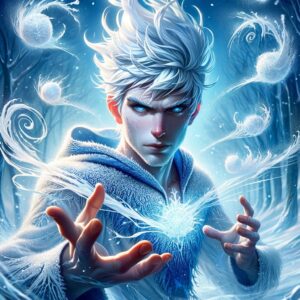
In modern times, Jack Frost has made appearances in various forms of media and popular culture. He is a character in several animated films and television shows, often portrayed as a mischievous but ultimately good-hearted figure. One notable example is his appearance as a character in the animated film “Rise of the Guardians,” where he is part of a group of mythical beings who protect children’s dreams. Here are some examples of where you can find Jack Frost in modern culture:
Literature: Jack Frost has appeared in various books and stories, often as a winter spirit or a mischievous character. Some authors have incorporated him into their fantasy and children’s literature.
Film: Jack Frost has appeared in several movies and animated films. One notable example includes the 1998 family film “Jack Frost,” where the character portrays a father who transforms into a snowman and endeavors to reestablish a connection with his son.
Video Games: Some video games feature Jack Frost as a character or enemy, particularly in games that have a winter or ice-themed setting. The “Shin Megami Tensei” series, for example, includes Jack Frost as a recurring character and mascot.
Holiday Traditions: Some cultures associate Jack Frost with winter and the holiday season, frequently connecting him to the folklore surrounding Santa Claus or other winter figures.
Advertising and Merchandise: Advertising and merchandising have also utilized Jack Frost, featuring him on various winter-themed products and holiday promotions.
Simiriarities
The Snow Queen: Originating from Hans Christian Andersen’s fairy tale, the Snow Queen is a powerful, icy monarch who can freeze objects and people with her icy touch. She rules over a magical winter realm and is often depicted as a beautiful yet cold-hearted figure.
In various cultures, people personify winter as Old Man Winter. They often portray him as a bearded old man with the ability to bring cold weather, snow, and ice. In some stories, he is a benevolent figure, while in others, he is more mischievous or even malevolent.
Father Frost (Ded Moroz): A character from Russian folklore, Father Frost is akin to Santa Claus but with a frosty twist. He is a kindly figure who brings gifts and frosty weather during the winter holidays. His magical abilities include freezing objects and making snowfall.
Yuki-Onna: A ghostly spirit from Japanese folklore, Yuki-Onna, or “Snow Woman,” appears as a beautiful woman dressed in white. She lures travelers into the snow, where she freezes them with her icy breath. She is associated with the deadly cold of winter.
People refer to the Yeti, also known as the Abominable Snowman, as a legendary ape-like creature that inhabits the Himalayan mountains. People often describe it as large, covered in fur, and capable of surviving in frigid, snowy environments.
The Wendigo: In Native American and Algonquian folklore, the Wendigo is a malevolent, cannibalistic creature associated with cold and hunger. It has a chilling appearance and is said to embody the harshness of winter.
FAQ
What does Jack Frost do?
Jack Frost is said to bring frost and ice to the world, causing cold weather and freezing temperatures.
Is Jack Frost a human?
In folklore and mythology, Jack Frost is usually depicted as a personification of winter, often portrayed as a mischievous sprite or a personified frost.
Does Jack Frost have any stories or legends?
Yes, there are various stories and legends about Jack Frost in different cultures, but there is no single definitive tale.
Is Jack Frost related to Christmas?
Jack Frost is sometimes associated with Christmas and is a popular character in winter-themed holiday decorations and stories.
Does Jack Frost have a family?
In some stories, Jack Frost is portrayed as having a family, including a wife or daughter, but these details can vary.
Are there any movies or books featuring Jack Frost?
Yes, there are several movies, books, and adaptations that feature Jack Frost as a character, such as "The Rise of the Guardians" animated film.
Is Jack Frost the same as Old Man Winter?
Old Man Winter is a similar character in folklore, often associated with winter's harshness, but they are not always the same character in different stories.
Why is Jack Frost often depicted with icicles and frosty patterns?
Jack Frost is associated with frost and ice, so his visual representation often includes icicles and frosty patterns to symbolize his connection to cold weather.
